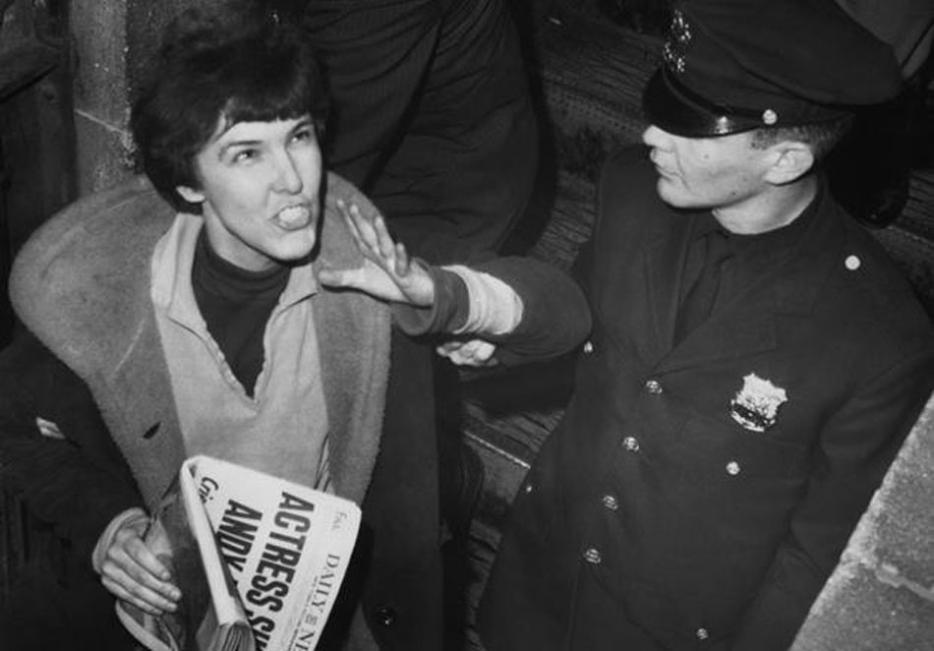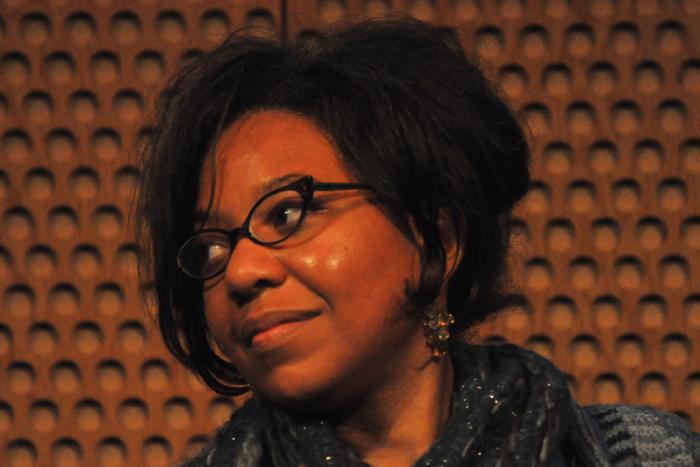It’s too bad that Valerie Solanas—who died of bronchopneumonia 25 years ago today—shot Andy Warhol, because her SCUM Manifesto is a great piece of literature: a very funny, very lucid expression of feelings that most of us have but know better than to accept as beliefs. When I say “most of us,” I don’t only mean women (SCUM stands for Society for Cutting Up Men). The manifesto is both a screed against men and a screed against everything wrong with the world, which, for Solanas, men happened to represent. Solanas, as you probably know, seems to have lacked the capacity to distinguish between feelings and reasonable beliefs: she lived in that moment where the guy next to you on the bus sneezes without covering his mouth and you hope he gets bisected by a falling window. I think a dozen horrible thoughts just getting to the office, but when I step off the streetcar, I’m back in society. Solanas was never in society, which is probably why she was such a good social satirist, whether or not she intended to be.
If you can ignore the fact that Solanas tried to murder three people on June 3, 1968 (Warhol, whom she shot through multiple organs; the art critic and curator Mario Amaya, whom she shot near the hip; and Warhol’s manager Fred Hughes, whom she’d have shot in the head had the gun not jammed), you might find her manifesto exhilarating. As the monologue of an angry brain, without a social chip to tell it to shush, that’s terrible, the essay is clear and abides a logic—most of her points are valid, if deeply unsound—and it galvanizes the way a Nine Inch Nails song does. (To my knowledge, no Nine Inch Nails song advocates for the extermination of males, though there might be a Swans song that does.) Solanas had excellent brain-gut synergy; and she had a conscience, albeit one dangerously out of tune with the real world. “I consider [the shooting] a moral act,” she told The Village Voice. “And I consider it immoral that I missed.”
Solanas didn’t shoot Warhol because he was male; she shot him at least partly because she believed he was conspiring with her editor, Maurice Girodias of Olympia Press, to steal her work (she is often said to have been diagnosed with schizophrenia). But she did hate men, purely and truly, and from accounts of her life, she had reason to. Her father sexually abused her, Freddie Baer writes in a biography printed with the Manifesto, and after her mother remarried, her grandfather beat her. By age 15 she was on her own, but she finished school and attended the University of Maryland at College Park for psychology. (There, she worked as a research assistant for Dr. Robert Brush, whom Mary Harron, director of I Shot Andy Warhol, tracked down with the help of researcher Diane Tucker. “I had a warm spot for her,” he told Harron. “I felt she’d come up the hard way.”) Solanas put herself through college by way of sex work, and when she landed in Greenwich Village in the mid-’60s, she made money by panhandling, turning tricks, and, as Harron writes, selling her conversation to passersby for six bucks an hour. (“The male’s ‘conversation,’ when not about himself, is an impersonal droning on, removed from anything of human value,” she later wrote.) She completed a play called Up Your Ass and gave it to Warhol, who lost it; and the SCUM Manifesto, which she peddled on the street.
The contempt, and the disgust, and the homicidal fervour is very real, but her grievances are often relatable, taken with a grain of salt. She writes what plenty of women have felt, with reason, if not believed. In her view, males are responsible for war, disease, work (everything would be automated by now, if men didn’t need projects to justify their existence), fear, conformity, authority. Everything a rebel rebels against. But you can substitute “male” for whoever your beef is with—rich people, lizards in human disguises—and if you substitute “maleness” for a more abstract quality, something you couldn’t pin on any one type of person and then set out to destroy them for, you’d have a pretty righteous philosophical tract. Solanas, for her part, thought philosophy was a farce: men, being empty and incapable of empathy, have to “label the male condition the Human Condition,” and “post their nothingness problem... as a philosophical dilemma,” whereas a woman “knows instinctively that the only wrong is to hurt others, and that the meaning of life is love.” But that’s what I’m talking about.
Shining under the bile is insight. Harron wrote that Solanas wasn’t very interested in art, which is weird because SCUM’s endpoint is basically creative utopia: “In actual fact the female function is to explore, discover, invent, solve problems, crack jokes, make music—all with love. In other words, create a magic world.” Men (or the bourgeoisie, or kids these days) “[have] no deep-seated individuality, which stems from what intrigues you, what outside yourself absorbs you, what you’re in relation to,” which is a great rule of thumb. She believes that Western philosophy only plants flags in the true and obvious, and that “Great Art” passes off obscurity for depth. I can see where she’s coming from.
Ignore the madness and the bigotry—she didn’t much care for gay men or trans people—and you realize the SCUM Manifesto is really funny. In a ranty, cathartic way that makes me wish she had done standup (so does her brief appearance in Warhol’s I, a Man, as well as in a more elegant, Swiftian sense—although Swift, now that I think of it, was quite ranty, and the SCUM Manifesto is funnier than A Modest Proposal. For men sympathetic to her objectives—that is, men who accept their inferiority—she prescribes “Turd Sessions, at which every male present will give a speech beginning with the sentence: ‘I am a turd, a lowly abject turd,’ then proceed to list all the ways in which he is. His reward for doing so will be the opportunity to fraternize after the session for a whole, solid hour with the SCUM who will be present.” Among the most harmful men are those “who sit idly on the street and mar the landscape with their presence.”
Solanas rants about women, too. Privileged, middle-class “Daddy’s Girls,” for instance, are so brainwashed “that they try to groove on labour pains and lie around in the most advanced nation in the world in the middle of the twentieth century with babies chomping away on their tits.” It’s hard to figure out what a SCUM woman is, exactly—a free-wheeling bitch among free-wheeling bitches, grooving on each other and being themselves, sure, but what does that involve? Writing manifestos and mauling Great Artists, most likely, because SCUM, at the end of the day, was just Solanas. “Man” was almost everyone else.
After shooting Warhol and Amaya, Solanas handed her gun to a cop in Time Square. She pleaded guilty to reckless assault with intent to harm, and received a three-year sentence; Olympia Press published the SCUM Manifesto a couple of months later. Shortly after her release, Baer writes, she was arrested again, for making threats to Warhol and others. In 1977, she contacted a columnist at The Village Voice, asking him to mention a new, self-published edition of the manifesto. “It’s just a literary device,” she said, of the Society for Cutting Up Men. “...It’s either nothing or it’s just me, depending on how you define it. I mean, I thought of it as a state of mind.” The interviewer asked if her views had changed. Solanas said, “No.”
As far as anyone knows, she spent the last decade of her life in New York and California, presumably bouncing around crash pads. “She was writing,” her mother told an interviewer for New York Magazine. “She fancied herself a writer, and I think she did have some talent,” as well as a “terrific sense of humor.” Twenty-five years ago, her body was found kneeling by the bed of a single-room occupancy unit in San Francisco’s Tenderloin District, where, Harron says, she’d been spotted typing away at a desk next to a stack of papers. According to the police report, “Her body was covered in maggots and the room appeared orderly.”






